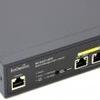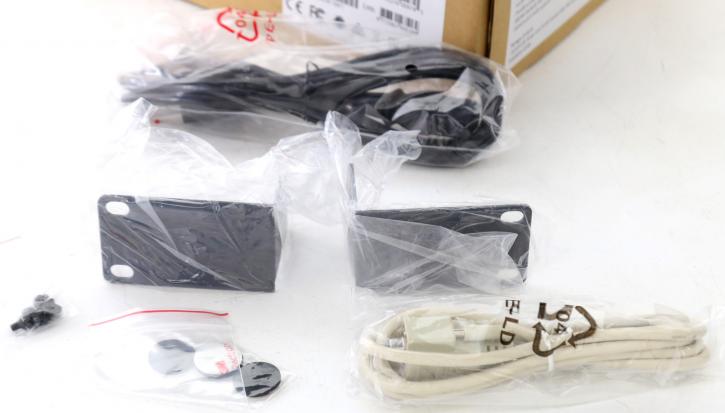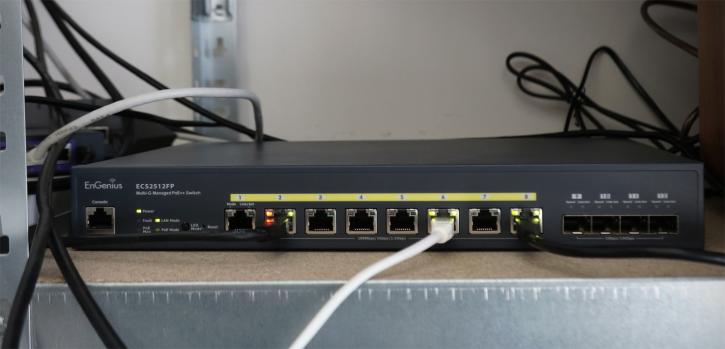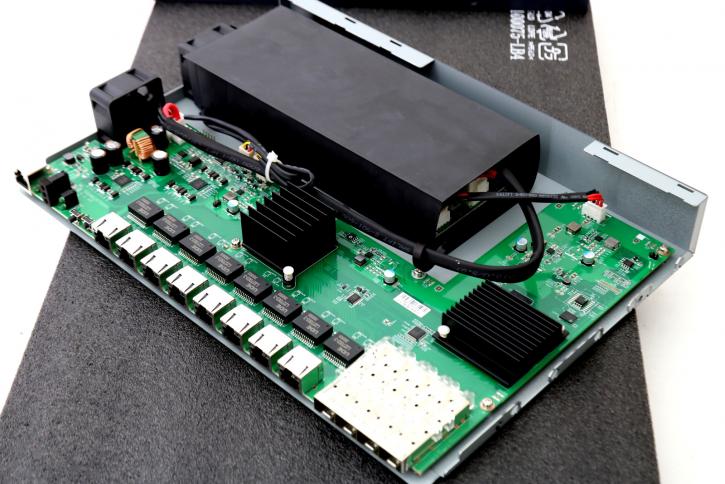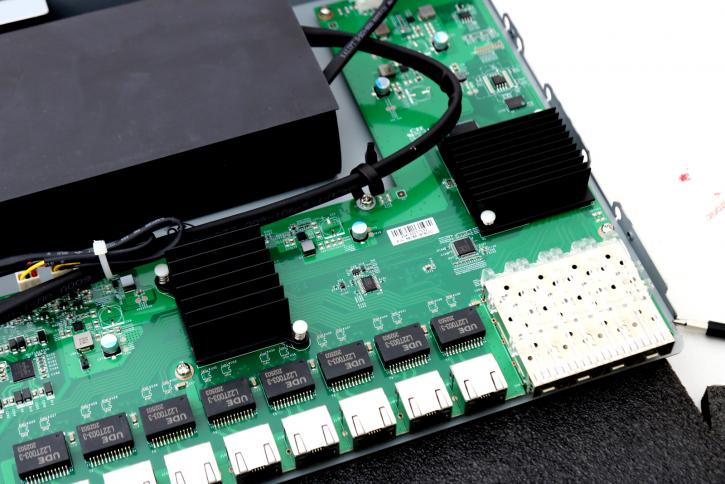Product Showcase and Installation
Installation
The switch has auto-negotiation. It didn't matter what type of cable that we plugged into it, be it cross-over or straight-through..What port you plug into it, it will figure it out and just work. This is a nice touch because invariably you discover that you need a different cable very late at night. Talking about cables, we used a wide variety of cables starting at CAT 5e, they all worked at 2.5G problem-free. So I would not worry too much about spending heaps of money on expensive better-shielded cables (albeit that's always better).
You can use the switch in your small office/home environment, but you should know this unit is a compatible 1U server rack product as well. Included are two rack-mount brackets (ears). There's also a package of screws to go along with it. In the event that you plan to use it on a table or shelf, there is also a bag with four round rubber feet included. The power cord is a standard PC power cable, thus the power source is integrated into the switch itself. The beige cable has an older appearance. It is not old, but it is a serial to rj45 cable that can be used to Telnet or SSH into the ECS2512FP if necessary.
Each port is equipped with two status LEDs. The right LED on each of these devices indicates that the link is active and blinks in response to network activity before becoming green. As you can see on the left, the LED shifted between orange and green to indicate the pace at which that specific item was connected. When you switch to PoE mode for the LED, it will only illuminate the green LED to indicate which ports are utilizing PoE, rather than all of them.
You can double-check your PoE ports in person to make sure they are working properly. Then there are four SFP+ slots at the very end of the cable. There are ports that support 1Gbps and 10Gbps transfer speeds, and they can be used with a variety of transceivers, including fiber transceivers for switching between switches and RJ45 copper transceivers to increase the number of jocks on the switch, which means you could potentially add four 10Gbps ports as well. Each includes a pair of LED indicators above the slot, as well as numbers that begin with the first 8 and go on from there. Because PoE is not supported for them, the only information displayed by the LEDs is link speed and activity.
The switch's internals seems well-organized and designed. I didn't remove the heatsinks from the chips in order to maintain integrity and condition. Two fans are located on the left side of the enclosure, which operate independently of one another. It's difficult to actively cool switches in a quiet manner, while decibel levels aren't a massive concern but we do recommend to tock away the switch in a closed cabinet as in a home environment it's a too loud unit to have closeby.
We located two Broadcom BCM59121B0KMLG integrated circuits (ICs) are tucked away on the left side of the board to drive the Power Over Ethernet rated 30W per channel up to 8 channels. A second Broadcom IC is used to supplement the first by providing an additional 30W per port.
